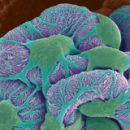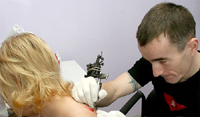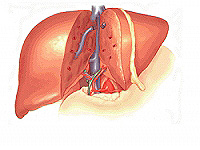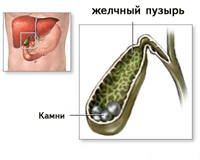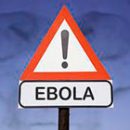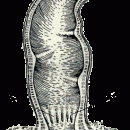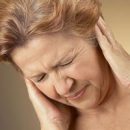The aggravation of chronic cholecystitis is often associated with a violation of the power mode, consuming fatty, acute products and alcohol. How the disease is manifested? What to do with its exacerbation and always need to contact a doctor?
Content
- Why cholecystitis occurs?
- When cholecystitis is exacerbated?
- Symptoms of exacerbation of chronic cholecystitis
- What to do with the exacerbation of cholecystitis?
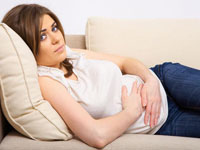 Chronic cholecystitis — One of the most common and complex diseases requiring a long-term conservative or urgent surgical treatment. Despite the high level of development of medicine, the number of patients with cholecystitis is growing from year to year. In parallel, the frequency of operations on the biliary tract is increasing, and with this — Number of complications, re «Putting» patients on the operating table and leading to disability.
Chronic cholecystitis — One of the most common and complex diseases requiring a long-term conservative or urgent surgical treatment. Despite the high level of development of medicine, the number of patients with cholecystitis is growing from year to year. In parallel, the frequency of operations on the biliary tract is increasing, and with this — Number of complications, re «Putting» patients on the operating table and leading to disability.
Why cholecystitis occurs?
Chronic cholecystitis — This is a chronic inflammation of the gallbladder, originally having an infectious nature, which is more common with changing the periods of clutches and exacerbations and in large numbers leading to the development of gallstone disease.
Doctors highlight two forms of cholecystitis, non-calculous and calculous, considering them by stages of one process.
The reasons for the development and exacerbation of cholecystitis are very diverse, but the disease is most often in infection, stagnation of bile and changing its physicochemical properties.
Bacterial infection plays a major role in the development of the disease. The microbes can enter the gallbladder on the bustling duodenal duodenal bubble, can be entered with blood flow from the inflamed intestine or lymphatic paths from remote foci of infection, for example, from inflamed sizzling almonds, incomplete sinuses, kidneys, droids, or prostate. In this case, staphylococci, streptococci, intestinal sticks are found in the bustling bubble. A certain role in the emergence of cholecystitis is played by parasitic infections, such as giardiasis or ascariasis, as well as viruses, such as hepatitis virus.
The reason for the stagnation of the bile and immediate causal exacerbation of cholecystitis can be:
- Dyskinesia biliary tract, including those caused by psycho-emotional disorders,
- Violation of the nutrition and insufficient entry of plant fiber,
- pregnancy,
- Hydodina,
- obesity,
- Anomalies for the development of the gallbladder.
The change in the properties of bile leads abuse of oily and fried food, chronic dehydration, allergies and metabolic diseases.
When cholecystitis is exacerbated?
By how often cholecystitis is sharpened, the gravity of the disease is evaluated. A light course is characterized by the emergence of exacerbations no more than once a month and rare bile colic. With a medium exacerbation there are 3–4 times a year, but colic arise more than 5–6 times during the year. The difficult course of the disease is stated if the gallbladder is inflamed more than 5 times a year and the patient suffers from frequent bile colic.
The factors provoking the exacerbation of cholecystitis are largely similar to the reasons that cause its development. Most often, the cause becomes a violation of a diet, in particular, large intervals between meals, overeating, consumption of oily, sharp, fried, smoked, pickled products and alcohol. The movement of stones in the bustling bubble and the appearance of symptoms of the disease can be provoked by physical exertion, changing body position. The exacerbation of the infectious process in the bustling bubble contributes to the weakening of immunity as a result of supercooling, acute viral infections or chronic diseases, weakening the body.
Symptoms of exacerbation of chronic cholecystitis
Pain
Pain syndrome is considered basic to exacerbate cholecystitis, appears after 2–3 hours after the action of the provoking factor and is characterized by the appearance of gravity, stupid or sharp, compressing pain in the right hypochondrium and under the spoon. The pain often spreads to the sternum, gives it to the right clavicle and in the back, is accompanied by a common weakness, heartbeat.
Strong colic paralyzes the patient, makes it look for such a position in which the pain weakens.
Dyspepsia
Half patients on the background of the exacerbation of cholecystitis arise nausea, dryness and bitterness in the mouth, belching, vomiting, first eaten food, then mucus with an admixture of bile. During the bile colic, the bloating, gas delay and stool.
Increased temperature in the exacerbation of cholecystitis is observed in 40% of patients, more often in the form of subfebilite.
Jaundice occurs when an obstacle to the outflow of bile and manifests itself with a yellow tint of the scool, skin and mucous membranes, staining urine into bright yellow or brown, bleaching feces.
Other manifestations of chronic cholecystitis:
- Pain in the heart and dflex rhythm disorders,
- Sustav pain,
- Long weakness, malaise, irritability, headaches, dizziness, insomnia,
- shiver and weakness in the limbs, an increase in blood pressure, tachycardia, high sweating.
What to do with the exacerbation of cholecystitis?
Cholecystitis — A serious illness, with exacerbation, it is more correct to apply for medical care, a survey and a full course of treatment. Bile colic — A condition requiring emergency access to the doctor, so when sharp abdominal pain appears, you need to call an ambulance brigade.
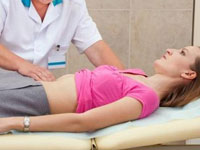 In the first two days of the exacerbation of cholecystitis, the bedding must be observed, completely abandon meals, drink only fastening tea, alkaline mineral water, wild rose, diluted with water fruit and berry juices. Liquid take small portions so as not to provoke nausea and vomiting. Total amount of fluid — 2 liters per day.
In the first two days of the exacerbation of cholecystitis, the bedding must be observed, completely abandon meals, drink only fastening tea, alkaline mineral water, wild rose, diluted with water fruit and berry juices. Liquid take small portions so as not to provoke nausea and vomiting. Total amount of fluid — 2 liters per day.
On the third day, liquid food is found on the diet: rubbed vegetable soups, liquid porridge, such as semolina, oatmeal and rice, eggs, mousses, jelly. A little later you can turn on the nutrition of the rubbed non-fat meat, fish, dairy products, sweet fruits, non-buoy vegetables and a little creamy and vegetable oil.
Power supply to the exacerbation of chronic cholecystitis should be fractional, frequent, chemically and mechanically gentle, so as not to provoke strong reductions in the gallbladder, but at the same time contribute to a constant outflow of bile.
Treatment of cholecystitis includes antibacterial therapy, differentiated use of spasmolitics, painkillers, choleretic, antacid and enzymatic drugs. Physiotherapy of the disease includes mud applications, electrophoresis.
When blocking the bile duct, the development of jaundice, the empiemes of the gallbladder and other complications are emergency cholecystectomy — Removal of gallbladder. In most cases, doctors try to stop inflammation and, if necessary, conduct an operation in a planned manner.
Literature:
- AND. D. Laranian, L. G. Rakitskaya, E. IN. Malakhova, L. D. Mamedov. Treatment of chronic cholecystitis, attending physician, number 6, 2006.
- BUT. WITH. Belousov, B. D. Divebin, B. NS. Jacques. Diagnostics, Differential Diagnostics and Treatment of Dieuction Organs. M.: Medicine, 2002. 424 C.

